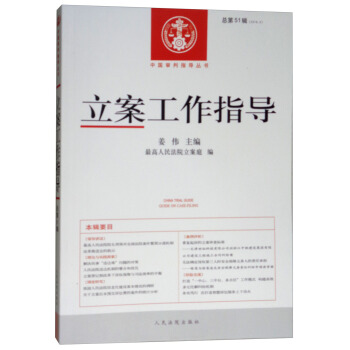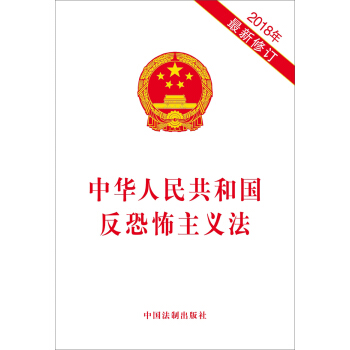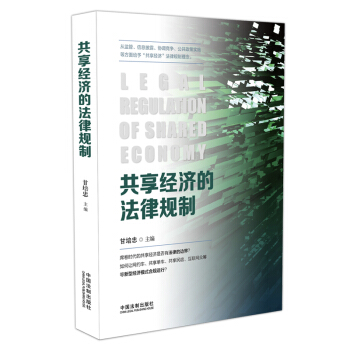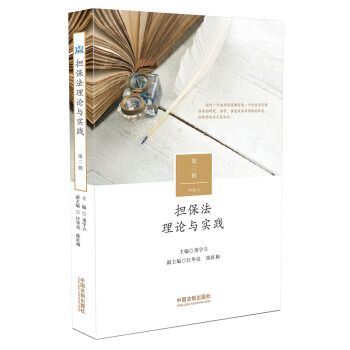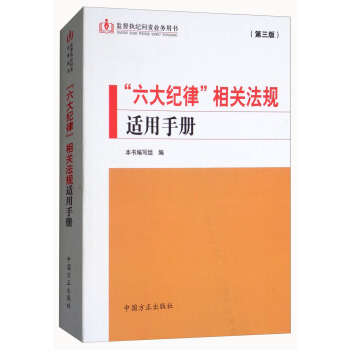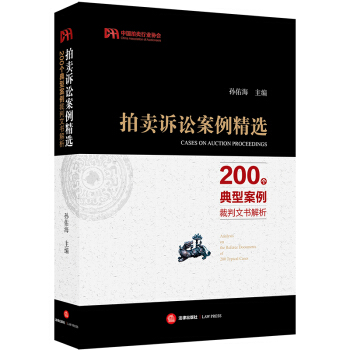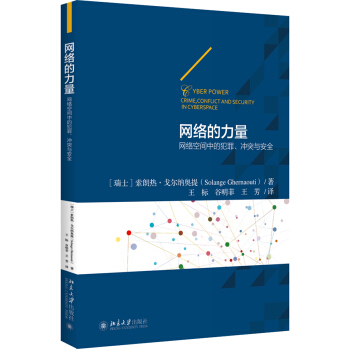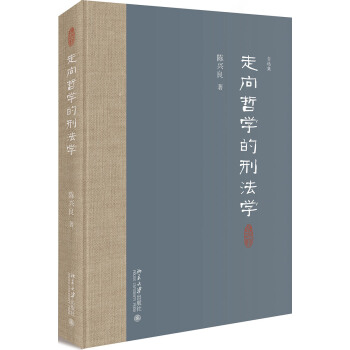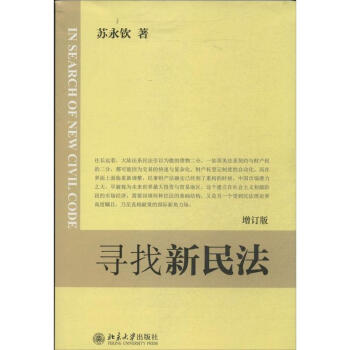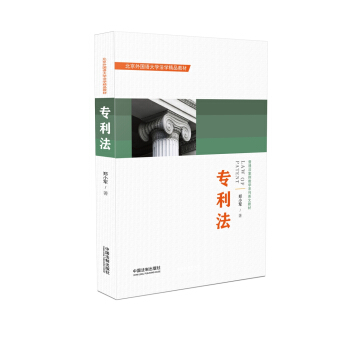

具体描述
内容简介
本书是北京外国语大学法学精品教材“普通法案例教学系列”的一本,是针对中国学生,经过北京外国语大学法学院十多年课堂教学经验的积累,吸取国外法学教育方法中的有益成分的基础上编写而成的。共分为十四章,包括:概论、新颖性、实用性、非显而易见性、可专利性主题、公开、权利要求、专利审查、授权后修改等专利前期确权工作的课题,以及侵权、救济、许可、国际申请、发展现状等后期维权工作的内容。
作者简介
郑小军,北京外国语大学法学院创始人之一,于2001年从美国回国,担任北外法学教育的创始工作,并从事英文法律教学工作至今,所授课程包括:英美法概论、英文法律写作、模拟法庭、知识产权概论、商标法、专利法、英美财产法和侵权法以及美国宪法学。
郑小军老师曾在中国国际贸易促进委员会仲裁委员会和商标代理部工作,代表中国首次出席国际工业产权大会和许可证执行人会议,完成多项重大和具有历史性案件,为中国商标法律的发展和完善做出过独到的贡献。郑小军老师自1989年至2001年在美国纽约和新罕布什尔州工作学习达12年,主要从事商标代理和咨询工作,并于1995年在富兰克林法学院获得知识产权硕士学位。
自2001年从事教学工作以来,郑小军老师为推进法律英语教学不遗余力,经常参加各种相关学术活动、发表有关论文,并给全国各高校法律英语教师提供培训课程,广受好评。
目录
Table of Contents
Chapter Ⅰ?GENERAL INTRODUCTION1
A. Brief Note on American Legal System1
B. Intellectual Property Law and Patents2
Bonito Boats, Inc. v. Thunder Craft Boats, Inc.2
C. Justification of Patent System7
D. Applicable Law 8
E. Forums and Jurisdiction10
Chapter Ⅱ?NOVELTY11
A. Introduction11
B. Public Sale16
Pennock v. Dialogue16
C. Use in Public21
Egbert v. Lippmann21
D. Printed Publication24
In re Hall24
Chapter Ⅲ?UTILITY29
A. Introduction29
Lewell v. Lewis29
B. Chemical Compound31
Brenner, Commissioner of Patents v. Manson31
In re Brana37
C. Immorality45
Juicy Whip, Inc. v. Orange Bang, Inc.45
Chapter Ⅳ?NONOBVIOUSNESS51
A. Introduction51
Hotchkiss v. Greenwood52
B. Obviousness Test56
Graham v. John Deere Co. of Kansas City56
C. Motivation to Combine Prior Arts65
KSR International Co. v. Teleflex Inc.65
Chapter Ⅴ?PATENTABLE SUBJECT MATTER71
A. Introduction71
Diamond v. Chakrabarty72
B. Computer Programs81
In The Matter Of Application By Fujitsu81
C. Business Methods86
In re Bilski86
Bilski v. Kappos100
D. Laws of Nature102
Mayo Collaborative Services v. Prometheus Laboratories, Inc.102
Chapter Ⅵ?DISCLOSURE111
A. Introduction111
B. Enablement112
O’Reilly v. Morse112
C. Written Description118
Ariad Pharmaceuticals, Inc. v. Eli Lilly and Company118
D. Best Mode Requirement131
Chapter Ⅶ?CLAIMS133
A. Introduction133
B. Claim Structure137
C. Types of Claim140
Abbott Laboratories v. Sandoz, Inc.143
D. Claiming Technique148
Ex Parte Fressola148
E. Claim Construction151
Markman v. Westview Instruments, Inc.152
Chapter Ⅷ?PATENT PROSECUTION159
A. Introduction159
B. Preparing and Filing Patent Applications164
Kingsdown Medical Consultants Ltd. v. Hollister Inc.164
C. Examination168
D. Docketing169
Chapter Ⅸ?POST-ISSUANCE CORRECTION171
A. Introduction171
B. Certificate of Correction171
C. Reissue172
Seattle Box Co. v. Indus. Crating & Packing Inc.174
D. Reexamination179
Third-Party Opposition of Patent Issuance180
Chapter Ⅹ?PATENT INFRINGEMENT187
A. Introduction187
B. Literary Meaning of Claim Language190
Unique Concepts, Inc. v. Brown190
C. Indirect Infringement196
Deepsouth Packing Co. v. Laitram Corp.196
Microsoft Corporation v. AT&T; Corp.201
D. Contributory Infringement & Patent Misuse210
Dawson Chemical Co. v. Rohm & Haas Co.210
E. Infringing Use217
Centillion Data Systems v. Qwest Communications International217
F. Doctrine of Equivalents and Its Limitations224
Corning Glass Works v. Sumitomo Electric U.S.A., Inc.224
Festo Corp. v. Shoketsu Kinzoku Kogyo Kabushiki Co., Ltd.230
Chapter Ⅺ?DEFENSE TO PATENT INFRINGEMENT239
A. Introduction239
B. Noninfringement241
C. Invalidity241
D. Unenforceability242
A.C. Aukerman Company v. R.L. Chaides Construction Co.242
Hazel-Atlas Glass Co. v. Hartford-Empire Co.252
Therasense, Inc. v. Becton, Dickinson & Co.256
E. Patent Misuse and Antitrust Counterclaims261
F. Other Defenses261
Chapter Ⅻ?REMEDIES263
A. Introduction263
B. Compensatory Damages263
C. Injunctions264
City of Milwaukee v. Activated Sludge, Inc.264
eBay Inc. v. MercExchange, L.L.C.266
D. Punitive Damages and Attorney Fee270
In re Seagate Technology, LLC270
Chapter ⅫⅠ?PATENT LICENSING275
A. Introduction275
B. Litigation and Settlement276
C. Compulsory Licensing277
D. Licensor Repudiation and Assignor Estoppel278
E. Antitrust Violations279
U.S. Philips Corp. v. International Trade Commission279
F.T.C. v. Activis, Inc.294
Chapter ⅩⅣ?CURRENT ISSUES AND DEVELOPMENT307
A. Introduction307
B. Patent Trolling307
First-of-Its-Kind Settlement between NY and Patent Troll
Establishes Guidelines to Prevent Deceptive and Exploitative
Patent Assertion Conduct307
C. Parallel Import, Grey Market, and Exhaustion Doctrines (Domestic & International Exhaustion)311
Adams v. Burke311
General Talking Pictures Corp. v. Western Electronics Co.316
D. Unfair Trade Practices (Patent) Investigation at USITC320
精彩书摘
Bonito Boats, Inc. v. Thunder Craft Boats, Inc.
United States Supreme court, 1989
489 U.S. 141
O’CONNOR, JUSTICE.
Article I, § 8, cl. 8 of the Constitution gives Congress the power “To promote the Progress of Science and useful Arts, by securing for limited Times to Authors and Inventors the exclusive Right to their respective Writings and Discoveries.” The Patent Clause itself reflects a balance between the need to encourage innovation and the avoidance of monopolies which stifle competition without any concomitant advance in the “Progress of Science and useful Arts.” As we have noted in the past, the Clause contains both a grant of power and certain limitations upon the exercise of that. Congress may not create patent monopolies of unlimited duration, nor may it “authorize the issuance of patents whose effects are to remove existent knowledge from the public domain, or to restrict free access to materials already available.” Graham v. John Deere Co. (1966).
From their inception, the federal patent laws have embodied a careful balance between the need to promote innovation and the recognition that imitation and refinement through imitation are both necessary to invention itself and the very lifeblood of a competitive economy. Soon after the adoption of the Constitution, the First Congress enacted the Patent Act of 1790, which allowed the grant of a limited monopoly of 14 years to any applicant that “hath … invented or discovered any useful art, manufacture, … or device, or any improvement therein not before known or used.” In addition to novelty, the 1790 Act required that the invention be “sufficiently useful and important” to merit the 14-year right of exclusion. Section 2 of the Act required that the patentee deposit with the Secretary of State, a specification and if possible a model of the new invention, “which specification shall be so particular, and said models so exact, as not only to distinguish the invention or discovery from other things before known and used, but also to enable a workman or other person skilled in the art or manufacture … to make, construct, or use the same, to the end that the public may have the full benefit thereof, after the expiration of the patent term.”
The first Patent Act established an agency known by self-designation as the “Commissioners for the promotion of Useful Arts,” composed of the Secretary of State, the Secretary of the Department of War, and the Attorney General, any two of whom could grant a patent. Thomas Jefferson was the first Secretary of State, and the driving force behind early federal patent policy. For Jefferson, a central tenet of the patent system in a free market economy was that “a machine of which we were possessed, might be applied by every man to any use of which it is susceptible.” 13 Writings of Thomas Jefferson, 335 (Memorial ed. 1904). He viewed a grant of patent rights in an idea already disclosed to the public as akin to an ex post facto law, “obstructing others in the use of what they possessed before.” Jefferson also played a large role in the drafting of our Nation’s second Patent Act, which became law in 1793. The Patent Act of 1793 carried over the requirement that the subject of a patent application be “not known or used before the application.” A defense to an infringement action was created where “the thing, thus secured by patent, was not originally discovered by the patentee, but had been in use, or had been described in some public work anterior to the supposed discovery of the patentee.” Thus, from the outset, federal patent law has been about the difficult business “of drawing a line between the things which are worth to the public the embarrassment of an exclusive patent, and those which are not.” 13 Writings of Thomas Jefferson, at 335.
Today’s patent statute is remarkably similar to the law as known to Jefferson in 1793. Protection is offered to “[w]hoever invents or discovers any new and useful process, machine, manufacture, or composition of matter, or any new and useful improvement thereof.” 35 U.S.C. § 101. Since 1842, Congress has also made protection available for “any new, original and ornamental design for an article of manufacture.” 35 U.S.C. § 171. To qualify for protection, a design must present an aesthetically pleasing appearance that is not dictated by function alone, and must satisfy the other criteria of patentability. The novelty requirement of patentability is presently expressed in 35 U.S.C. §§ 102(a) and (b), which provide:
A person shall be entitled to a patent unless –
(a) the invention was known or used by others in this country or patented or described in a printed publication in this or a foreign country, before the invention thereof by the applicant for patent, or
(b) the invention was patented or described in a printed publication in this or a foreign country or in public use or on sale in this country more than one year prior to the date of application for patent in the United States ….
Section 102(a) and (b) operated in tandem to exclude from consideration for patent protection knowledge that is already available to the public. They express a congressional determination that the creation of a monopoly in such information would not only serve no socially useful purpose, but would in fact injure the public by removing existing knowledge from public use. From the Patent Act of 1790 to the present day, the public sale of an unpatented article has acted as a complete bar to federal protection of the idea embodied in the article thus placed in public commerce.
In the case of Pennock v. Dialogue, 2 Pet. 1, 7L.Ed. 327 (1829), Justice Story applied these principles under the patent law of 1800. The patentee had developed a new technique for the manufacture of rubber hose for the conveyance of air and fluids. The invention was reduced to practice in 1811, but letters patent were not sought and granted until 1818. In the interval, the patentee had licensed a third party to market the hose, and over 13,000 feet of the new product had been sold in the city of Philadelphia alone. The Court concluded that the patent was invalid due to the prior public sale, indicating that, “if [an inventor] suffers the thing he invented to go into public use, or to be publicly sold for use” “[h]is voluntary act or acquiescence in the public sale and use is an abandonment of his right.” The Court noted that under the common law of England, letter patent were unavailable for the protection of articles in public commerce at the time of the application, and that this same doctrine was immediately embodied in the first patent laws passed in this country.
As the holding of Pennock makes clear, the federal patent scheme creates a limited opportunity to obtain a property right in an idea. Once an inventor has decided to lift the veil of secrecy from his work, he must choose the protection of a federal patent or the dedication of his idea to the public at large. As Judge Learned Hand once put it: “[I]t is a condition upon the inventor’s right to a patent that he shall not exploit his discovery competitively after it is ready for patenting; he must content himself with either secrecy or legal monopoly.” Metalizing Engineering Co. v. Kenyon Bearing & Auto Parts Co., 153 F.2d 516 (CA2), cert. denied, 328 U.S. 840 (1946).
....
用户评价
坦白说,当初我买这本书,主要还是被它的名字给吸引了。我一直对“专利”这个词带着一种神秘感,总觉得那是属于科学家、发明家和律师们的专属领域,而普通人很难触及。但我又隐隐觉得,在当今这个科技飞速发展的时代,专利法的重要性不言而喻,它关系到每一个创新者的权益,也影响着整个社会的科技进步。 我希望通过阅读这本书,能够真正理解专利法的“前世今生”。它到底是如何产生的?在不同的国家和历史时期,专利法的演变又是怎样的?它背后蕴含的哲学思考又是什么?我个人对历史和制度的演进过程非常感兴趣,所以,我希望这本书不仅仅是枯燥的法律条文堆砌,更能展现出专利法是如何一步步发展到今天的,它又是如何与社会经济发展相契合的。 我特别想知道,专利法在保护创新和促进技术传播之间,是如何做到平衡的。一方面,它要给予发明者足够的回报,激励他们继续投入研发;另一方面,它又不能过度限制技术的传播,否则可能会阻碍社会的整体进步。这种张力,我希望在这本书中能够得到深入的剖析。我脑海中已经有很多关于这个平衡点的疑问,比如,专利保护的期限是否合理?专利的范围划定又该遵循怎样的原则? 这本书的装帧设计,我个人觉得非常有特点。它不像市面上许多法律书籍那样刻板,反而带有一种书卷气。封面上的插图,虽然我还没细细品味,但给人一种“智慧之光”的感觉,暗示了书中内容可能蕴含着深远的见解。我喜欢这种能够引发读者思考的设计,它能够让我在翻开书页之前,就已经开始对书中的内容产生浓厚的兴趣和探索的欲望。 总的来说,我对这本书的期待,是希望它能提供一个宏观的视角,让我从更广阔的历史和哲学层面去理解专利法。我希望它能不仅仅是法律条文的解释,更能让我感受到专利法在人类文明发展中所扮演的重要角色,以及它在现代社会中所发挥的独特作用。我期待着在这本书的字里行间,找到我一直以来对专利法所怀揣的好奇心的解答。
评分这本书的封面设计得十分简约大气,那种深邃的蓝色调,配上烫金的“专利法”三个字,瞬间就给人一种庄重而专业的质感。我拿到书的时候,就有一种想要深入探索其中奥秘的冲动。虽然我并非法律领域的专业人士,但我对知识产权,尤其是专利这个概念一直充满好奇。我一直觉得,创新是推动社会进步的强大引擎,而专利制度就像是为这些创新的火种提供保护和激励的基石。 我之前对专利法的理解,更多地停留在一些零散的新闻报道和科普文章中,比如某个科技巨头又获得了多少多少专利,或者某个技术发明被判侵权等等。这些信息虽然有趣,但总感觉隔靴搔痒,未能触及专利法的核心。我希望通过阅读这本书,能够系统地了解专利法的基本原理,比如什么是专利?什么样的发明可以获得专利?专利的申请流程是怎样的?权利人又有哪些权利和义务? 更重要的是,我渴望了解专利法在现实生活和商业活动中的实际应用。比如,在创业过程中,如何有效地进行专利布局,以保护自己的核心技术?在与竞争对手的较量中,如何运用专利武器,或者避免陷入专利纠纷?对于普通大众来说,又该如何理解和尊重他人的专利权?这本书似乎能够解答我这些萦绕心头许久的疑问,让我对这个看似遥不可及的法律领域有一个更清晰、更具象的认识。 这本书的书页纸质手感非常好,翻阅起来有一种沉甸甸的实在感,这点对于喜欢实体书的我来说,无疑增添了一份阅读的愉悦。封面设计上的字体选择和排版也显得十分考究,没有多余的装饰,却透露出一种严谨的态度,让人对接下来的内容充满期待。我一直相信,一本好书,不仅在于其内容的深度和广度,也在于它能带给读者怎样的阅读体验,而这本书在这方面,似乎已经给了我一个非常好的开端。 总而言之,我购买这本书的初衷,是希望能够填补我在专利法知识上的空白,并对这一法律领域产生更深刻的理解。我希望它不仅能提供理论知识,更能引导我思考如何在实际生活中运用这些知识,尤其是在面对创新和知识产权保护的问题时,能够有更清晰的思路和更明智的决策。这本书,是我探索知识产权世界的敲门砖,我期待着它能为我打开一扇新的大门。
评分这本书的封面上,那个抽象的、由无数细线交织而成的图案,给我一种“知识网络”的感觉,仿佛象征着专利法背后错综复杂的规则和海量的技术信息。这种设计让我觉得,作者一定对专利法有着深刻的理解,并且能够将其以一种更具象、更有启发性的方式呈现出来。我个人比较喜欢这种带有艺术感的设计,它能让我对书中的内容产生更强烈的探索欲望。 我之所以对专利法产生兴趣,很大程度上源于对科技创新的关注。我认为,专利法是鼓励创新、保护创新者权益的基石。我希望这本书能够深入浅出地解释专利法的核心原则,比如“新颖性”、“创造性”和“实用性”这些关键的判断标准。我希望它能用一些生动的案例,来阐述这些抽象的概念,让我能够更好地理解它们在实际应用中的意义。 更进一步,我特别想了解专利法在不同行业领域的应用差异。比如,在生物医药、信息技术、机械制造等领域,专利法的侧重点和挑战可能是不一样的。这本书是否能够提供一些行业性的分析?另外,我也对专利的国际化问题很感兴趣,不同国家之间的专利申请和保护机制有何异同?是否存在一些全球性的趋势或挑战? 我注意到这本书的尺寸和厚度都比较适中,感觉既不会过于单薄,又不会显得笨重。这种“刚刚好”的尺寸,非常适合放在我的书架上,也方便我随时随地拿出来阅读。我希望这本书的内容也是如此,既有深度,又不至于过于晦涩难懂,能够让我这种非专业人士也能有所收获。 总的来说,我希望这本书能够带给我一种“豁然开朗”的感觉。我期待它能够在我心中建立起一个清晰、完整的专利法知识框架,让我能够理解专利法的价值,掌握其基本规律,并能够将其与我对科技和创新的理解相结合。这本书,对我来说,是连接“技术”与“法律”的一座重要桥梁。
评分我拿到这本书的时候,首先注意到的就是它沉甸甸的质感,感觉里面一定蕴含着不少分量。封面设计上,我比较喜欢它采用的黑白撞色,简洁有力,没有花哨的图形,只有清晰的“专利法”三个字,给人一种非常专业、直击要害的感觉。我一直觉得,法律书籍就应该有这样的气质,不玩虚的,只讲干货。 我本人对一些比较“硬核”的知识一直抱有浓厚的兴趣,虽然我不是法律专业的,但对于像专利法这样与科技创新紧密相连的领域,总觉得不了解一下会错过很多。我希望这本书能够像一位经验丰富的向导,带我穿越专利法的迷宫。我最想了解的,就是专利法的具体操作层面。比如,如何撰写一份合格的专利申请?申请过程中有哪些常见的陷阱需要避开? 我还很关心专利侵权的认定标准是什么?如果发现自己的专利被侵犯了,又该如何进行维权?反过来,如果我不小心侵犯了他人的专利,又会面临怎样的法律后果?这些都是我日常生活中可能遇到的,或者至少是希望能够了解的实际问题。我希望这本书能够提供非常具体、可操作的指导,而不是停留在理论层面。 书的内页排版也让我觉得很舒服,字体大小适中,行间距也比较宽松,阅读起来不会觉得压抑。一些关键的法律术语,我猜想作者可能会用不同的字体或者颜色来标注,这对于像我这样的初学者来说,会非常有帮助。我希望这本书在细节上也能做到精益求精,让我的阅读体验更加顺畅和高效。 总而言之,我期待这本书能够提供一套系统、实用的专利法知识体系,让我能够从零开始,逐步掌握专利申请、管理和维权的基本技能。我希望它能够帮助我理清思路,解决实际问题,并在必要的时候,能够做出正确的判断和决策。这本书,对我来说,就是一本“随身携带的专利法专家”。
评分这本书的封面设计,我认为是相当成功的。它采用了非常大胆的留白,然后在角落处用一种复古的字体写着“专利法”,给我一种“大师手笔”的感觉,仿佛在说:“最核心的东西,往往不需要过多修饰”。这种极简主义的设计风格,往往预示着内容本身的深刻和精炼。我个人就非常欣赏这种低调而有力量的设计。 我对专利法的兴趣,很大程度上源于对商业竞争和知识产权保护的思考。我经常看到各种新闻报道,说某个公司因为专利纠纷而陷入困境,或者因为拥有核心专利而占据市场主导地位。我希望这本书能够帮助我理解,专利法是如何在商业世界中发挥作用的。它不仅仅是法律条文,更是企业竞争力的重要组成部分。 我非常想了解,如何才能“聪明地”利用专利法来保护自己的商业利益。比如,在产品研发的早期阶段,应该如何进行专利检索,以避免侵犯他人的权利?在市场推广阶段,又该如何构建自己的专利壁垒,让竞争对手难以模仿?我希望这本书能够提供一些战略层面的思考,而不仅仅是程序性的指导。 此外,我还对专利无效宣告和专利诉讼这些比较“激烈”的环节感到好奇。在什么情况下,专利会被宣告无效?在发生专利侵权时,有哪些常见的诉讼策略?这本书是否会涉及这些话题?我希望它能够让我对专利法在实际“攻防”中的运用有一个更清晰的认识。 这本书的字体和纸张质量,我都觉得相当不错。阅读起来非常舒适,不会有刺眼的感觉。我希望书中内容的逻辑清晰,层次分明,能够引导我逐步深入理解专利法的复杂性。我期待这本书能够成为我理解知识产权和商业竞争关系的“秘密武器”。
相关图书
本站所有内容均为互联网搜索引擎提供的公开搜索信息,本站不存储任何数据与内容,任何内容与数据均与本站无关,如有需要请联系相关搜索引擎包括但不限于百度,google,bing,sogou 等
© 2025 book.idnshop.cc All Rights Reserved. 静思书屋 版权所有


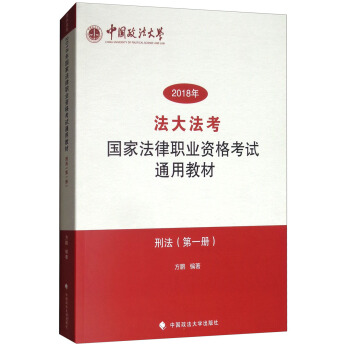
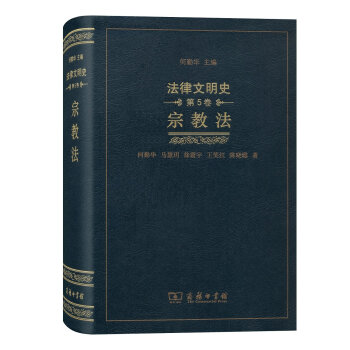
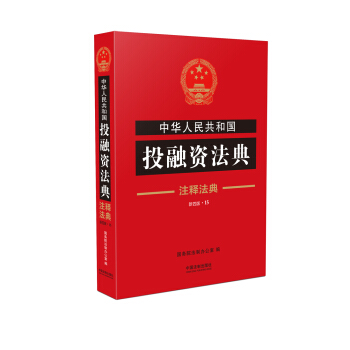
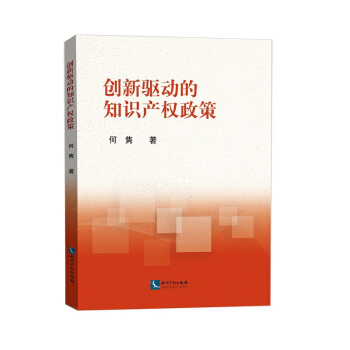
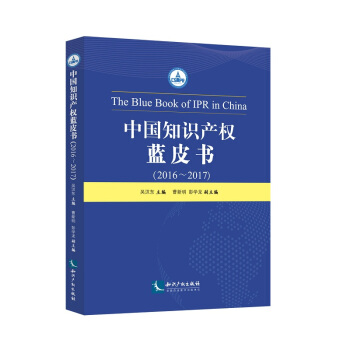
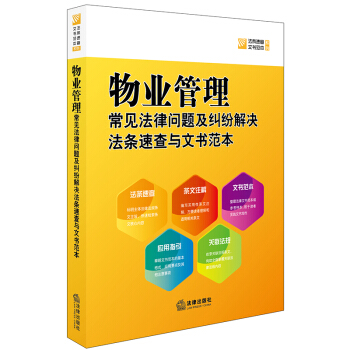
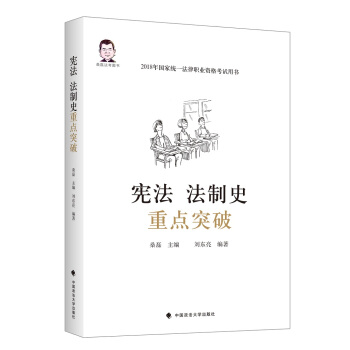
![张正勤律师谈建筑房地产法律事务(1) [Lawyer Zhang Zhengqin on Real Estate Legal Affairs] pdf epub mobi 电子书 下载](https://pic.tinynews.org/12349409/5b03ecb3N5e89106a.jpg)
